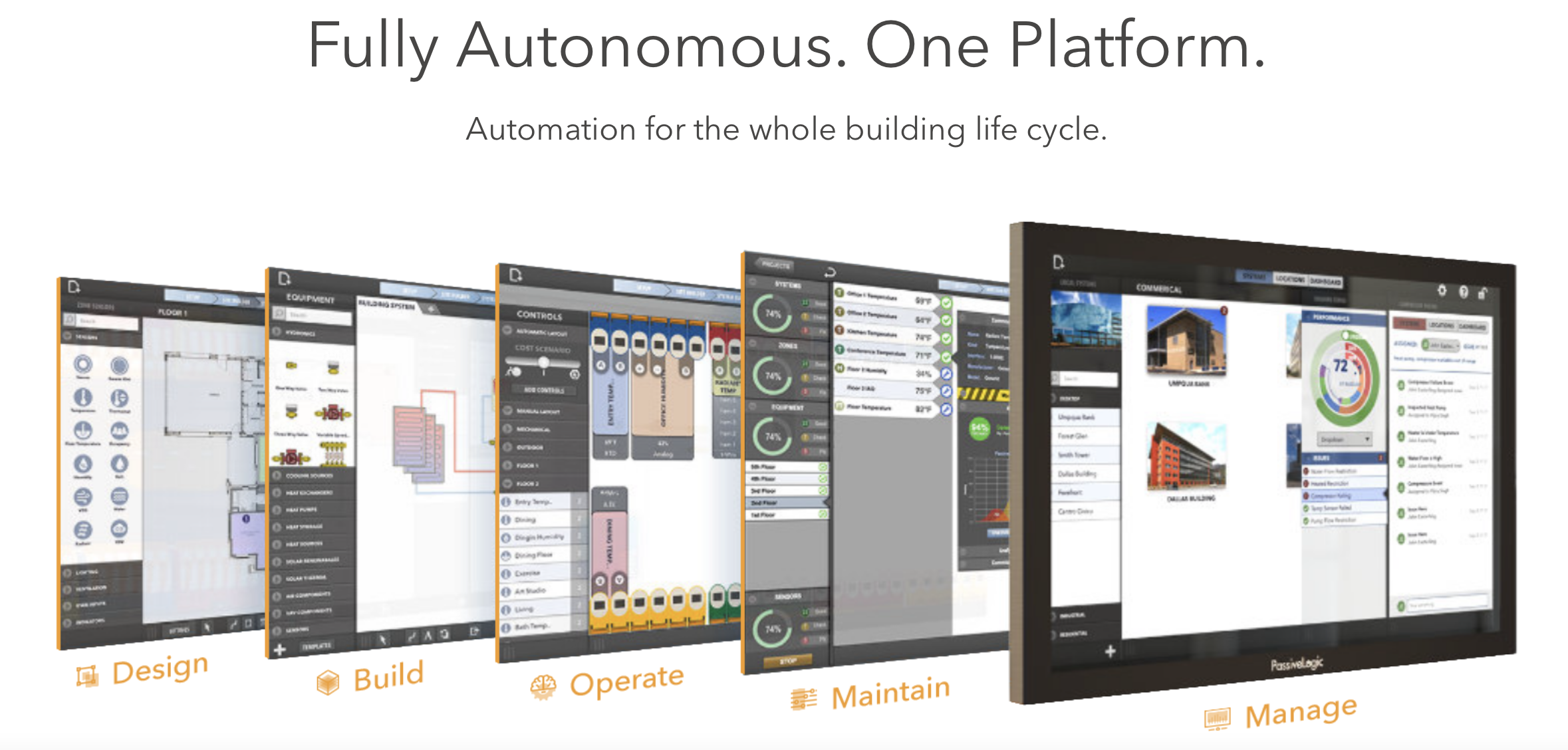It's time stupid buildings got smart. Most Building Management Systems (BMS) are packaged to look modern, but under the hood they are the same old 1880s thermostatics, 1930s style proportional control systems, and 1970s procedural programming, impossible to tune, and never optimized.
PassiveLogic, a Utah-based start-up, throws this antiquated, non-productive approach to building design out of the window and changes the game.PassiveLogic has created a brand new category in the industry called “Autonomous Buildings" and is establishing its product as the leading solution for achieving full autonomy in controlling buildings. Autonomous Buildings are a critical factor in solving two of the most significant challenges our society faces today: the climate crisis and managing life in post-pandemic world.
PassiveLogic was founded in 2016 by Troy Harvey and Jeremy Fillingim to bring autonomous control advancements from self-driven vehicles to the larger buildings market, with the vision of standardizing the technology so that users can design their own custom autonomous systems, without needing an engineering team or extensive training time in artificial intelligence. PassiveLogic’s autonomous building systems can be installed in new buildings or retrofitted in one-tenth the time of conventional HVAC controls and can reduce energy consumption by 30%, which is significant considering buildings use 40% of energy and 70% of the electricity produced.
In the building controls industry, different stakeholders are struggling to find common ground. Everyone uses the term “smart building” in talking about more advanced solutions, yet there is no consensus on what it really means for a building to be “smart”. The term “smart building” was coined to reference something more than just automation. In most cases, a “smart building” really describes a building containing connected sensors and equipment, but these “smart” devices are still based on a model-free foundation and lack any underlying intelligence.

But, according to PassiveLogic, you can teach and old building new tricks.
PassiveLogic starts with the fundamental requirement — a control system — and embeds a complete Autonomous Platform for Buildings. Built on a “deep digital twin” foundation powered by AI allows PassiveLogic to run future simulations of a building environment and choose the optimal future control path. According to PassiveLogic, the deep digital twin approach is a new artificial intelligence and IoT structure for building automation platforms.The digital twin technology understands the underlying physics and interconnections between buildings, equipment, systems, and occupant physiology. With the power to understand buildings, PassiveLogic automatically introspects its own operation, continuously commissions for the best efficiency, and generates its own analysis instead of just reacting to the past.
This approach results in 90% less effort than a conventional Building Management System — yet provides a whole value-chain of solutions not previously possible. The result is 30% energy savings and preventative maintenance capabilities, which helps to make indoor spaces healthier while opening up advanced technology to be more accessible rather than more exclusive.
PassiveLogic claims few competitors in the competitive building automation space. The crowded market includes companies such as Honeywell, Johnson Controls, Siemens, and Schneider Electric, such offer partial and not full stack solutions. PassiveLogic is the only full-stack solution in the marketplace. They offer a combined hardware and software solution that creates the most seamless and easy to use building automation tool available.
PassiveLogic’s novel approach to building automation is attracting investors. PassiveLogic received $16 million in funding with venture capital funds Keyframe Capital and Addition leading the Series A round in the fall of 2020. The US Department of Energy (DOE) followed the Series A round with a $1.1M contract to define an industry Digital Twin technology standard for next-generation automation systems. Additional backing for the standard comes from Swiss HVAC component manufacturer Belimo.
This article does not necessarily reflect the opinions of the editors or management of EconoTimes



 SpaceX Reportedly Preparing Record-Breaking IPO Targeting $1.5 Trillion Valuation
SpaceX Reportedly Preparing Record-Breaking IPO Targeting $1.5 Trillion Valuation  Robinhood Expands into Indonesia with Strategic Crypto and Brokerage Acquisitions
Robinhood Expands into Indonesia with Strategic Crypto and Brokerage Acquisitions  Morgan Stanley Downgrades Tesla as AI Growth Expectations Rise
Morgan Stanley Downgrades Tesla as AI Growth Expectations Rise  Ben & Jerry’s Board Chair Rejects Unilever Pressure Ahead of Magnum Spinoff
Ben & Jerry’s Board Chair Rejects Unilever Pressure Ahead of Magnum Spinoff  Adobe Strengthens AI Strategy Ahead of Q4 Earnings, Says Stifel
Adobe Strengthens AI Strategy Ahead of Q4 Earnings, Says Stifel  Australia’s National Storage REIT Accepts A$4 Billion Takeover Offer from Brookfield-Backed Consortium
Australia’s National Storage REIT Accepts A$4 Billion Takeover Offer from Brookfield-Backed Consortium  SK Hynix Shares Surge on Hopes for Upcoming ADR Issuance
SK Hynix Shares Surge on Hopes for Upcoming ADR Issuance  EssilorLuxottica Bets on AI-Powered Smart Glasses as Competition Intensifies
EssilorLuxottica Bets on AI-Powered Smart Glasses as Competition Intensifies  Trump’s Approval of AI Chip Sales to China Triggers Bipartisan National Security Concerns
Trump’s Approval of AI Chip Sales to China Triggers Bipartisan National Security Concerns  Trump–Kushner Links Raise Concerns as Paramount Pushes $108B Warner Bros Discovery Bid
Trump–Kushner Links Raise Concerns as Paramount Pushes $108B Warner Bros Discovery Bid  Southwest Airlines Has $11 Million Fine Waived as USDOT Cites Operational Improvements
Southwest Airlines Has $11 Million Fine Waived as USDOT Cites Operational Improvements  SK Hynix Labeled “Investment Warning Stock” After Extraordinary 200% Share Surge
SK Hynix Labeled “Investment Warning Stock” After Extraordinary 200% Share Surge  Malaysia Airlines Ordered to Compensate Families of MH370 Passengers
Malaysia Airlines Ordered to Compensate Families of MH370 Passengers  Disney Nominates Former Apple COO Jeff Williams to Join Its Expanding Board
Disney Nominates Former Apple COO Jeff Williams to Join Its Expanding Board  Allegiant Air Faces Union Block in Bid for Foreign Pilots’ Green Cards Amid Staffing Challenges
Allegiant Air Faces Union Block in Bid for Foreign Pilots’ Green Cards Amid Staffing Challenges  CVS Health Signals Strong 2026 Profit Outlook Amid Turnaround Progress
CVS Health Signals Strong 2026 Profit Outlook Amid Turnaround Progress 































